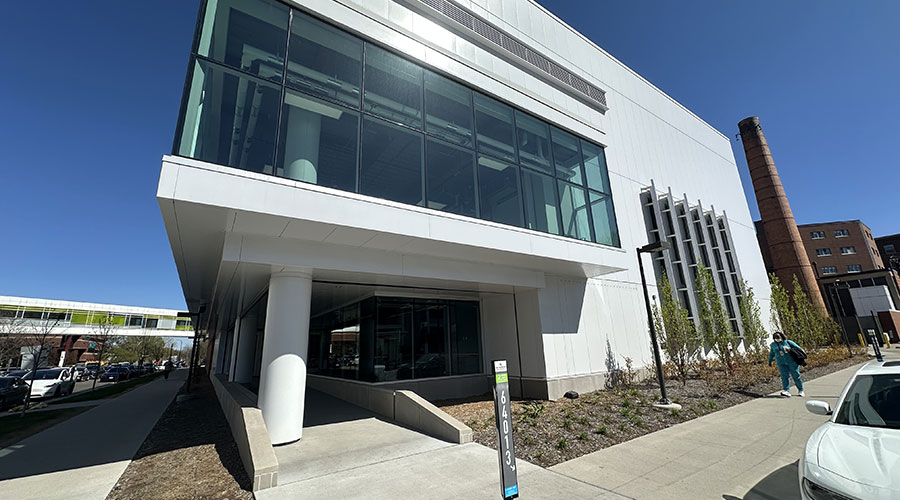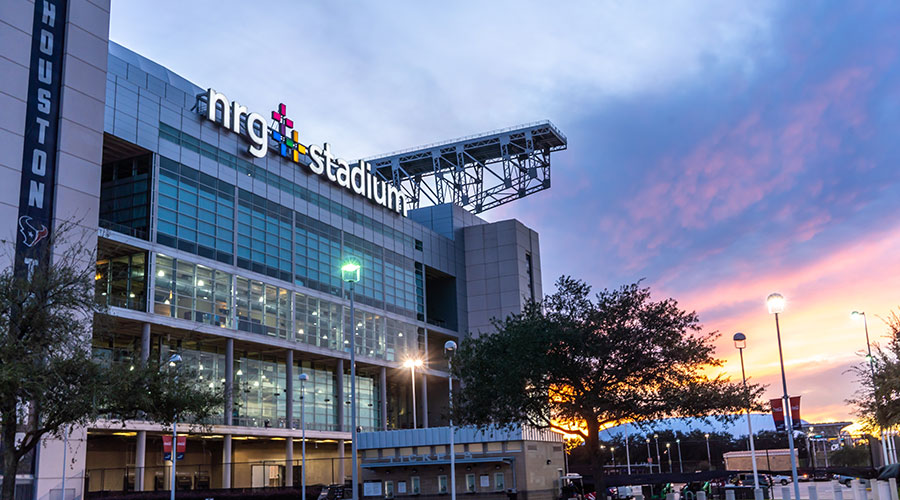Mainstream Green
Creating sustainable interiors is getting easier as green design options and product choices gain favor
Sustainability is having a growing influence on every type of design and construction project. Some municipalities are even mandating sustainability in certain buildings, and the American Institute of Architects recently released policy statements that set a goal of reducing by 50 percent in four years the amount of fossil fuel consumed to construct and operate buildings.
Interiors are an important element of the sustainable design. The U.S. Green Building Council, whose LEED (Leadership in Energy and Environmental Design) certification system has been a catalyst for sustainable building, introduced the LEED-CI (corporate interiors) rating system last year, providing a uniform way to measure sustainability in interiors projects.
LEED-CI works much the same way as the other LEED certification programs, with projects earning points in the categories of site selection, water, energy, materials and indoor air quality. Because designers of interior projects don’t always have control over whole-building operations, LEED-CI allows more points for materials than for mechanical systems.
Nevertheless, there are hurdles to LEED certification for interiors projects, including shorter schedules, limited budgets and a lack of data on sustainable strategies. As a result, in the early stages of LEED-CI, many projects that don’t obtain certification still use the guidelines to help implement sustainable strategies.
Making the Case
The cultural values of most organizations include a strong emphasis on community responsibility and employee well-being. Incorporating sustainability into a workplace not only helps a company express its mission, but also helps employees feel good about where they work.
Another argument is that sustainability can improve productivity. According to a report from the Environmental Protection Agency, illnesses related to indoor air pollution cost companies tens of billions of dollars in lost productivity and sick leave. Simply put, toxins in carpeting, paint and other materials can make people sick. Because employees represent a company’s highest per-square-foot office cost, keeping them well should be a top priority.
Finally, organizations shouldn’t underestimate the public relations and marketing advantages of having a sustainably designed office. A third-party endorsement lends credibility to the green effort.
Regardless of whether a project aims for LEED certification, sustainability goals are most successful when woven into the design approach early in the process. A common mistake is to treat sustainability as a side item. In fact, a well-designed space incorporates many sustainable design features.
At the outset of any interiors project — whether renovation or relocation — opportunities exist to take a sustainable approach. Holding an “eco-charette” early in the process that includes all the key players can give everyone an opportunity to develop common goals and determine ways to achieve them. Simply communicating to a design team that sustainability is valued is a step in the right direction.
The role of the facility executive in interior design projects is more visible than it was 10 years ago. It’s no longer common practice to hand off all decisions to the interior designer or contractor, and projects are better for it.
The involvement of the facility executive keeps the design effort focused on meeting organizational needs and addressing key values. What’s more, the facility executive can be an invaluable link from the design team to top management. This connection serves not only to keep the project on schedule and on budget, but also to introduce sustainability as a goal and push design innovation.
This early discussion about the project approach is also an opportunity to address misconceptions regarding sustainable design. Some people mistakenly assume that green design involves products that are untested, expensive or exotic. Others worry that aesthetics are compromised when sustainability is a priority.
In reality, neither has to be true. Still, dealing with contractors who aren’t comfortable with sustainable materials or techniques can be a disadvantage because many contractors are reluctant to be among the first to install some of the newer sustainable products. Be sure to ask questions and to push consultants to do research on newer products. And be ready to go to another source if resistance develops.
The Basics
Space planning can also have a significant impact on a project’s sustainability. Reducing the number of walls in a space can save energy by maximizing the use of natural light and reducing the amount of materials used. While occupants may be accustomed to working in private offices, tearing down walls and rebuilding them to accommodate business changes increases waste.
The San Francisco branch of Glumac, an engineering firm with a focus on sustainability, relocated to a space that was only briefly occupied by a Web firm. The space’s curved walls, vibrant colors and overall 1990s aesthetic weren’t exactly what Glumac wanted. Instead of knocking it all down and starting fresh, however, the design kept most of the existing walls, reused lighting and carpet, and focused the design effort and budget into the public and community spaces.
The things that cannot be seen often have the biggest impact. For example, look for zero- or low-VOC adhesives and paints. In carpet tile backing and seating components, look for alternatives to PVC (vinyl), such as polypropylene. Avoid fire-retardants, “PBDEs,” in upholstery foam. It’s also relatively easy to find millwork and wood furniture substrates made of rapidly renewable agricultural waste products such as wheat and sorghum stalks. Wood chips certified by the Forest Stewardship Council are another great option — as long as they have no added urea formaldehyde.
A simple guideline is to look for recycled content in everything. Ceiling tile, wallboard, carpet fiber and backing, particleboard and panel fabrics are some of the items that can easily be found with recycled content. Sometimes it’s inherent in a product, such as furniture and products made of steel or aluminum. Whether or not a product is likely to be recycled at the end of its life is another — and often more important — consideration.
Consider the Source
One of the most common ways to improve sustainability is to incorporate locally sourced products, which are often lower in cost. Knowledgeable designers keep up to date on what is available in their region. In California, for example, sierra white granite, gypsum for wallboard and white fir veneer certified by the Forest Stewardship Council are abundant and often specified on projects pursuing LEED certification. Using certain standard materials — like plastic laminate for pantry surfaces — can be unavoidable when a tight budget comes into play, but there are always opportunities to reduce the negative environmental impact of a not-so-green item. In this case, use a local laminate company and a formaldehyde-free substrate with low-VOC adhesives.
Wood that has been certified under the Forest Stewardship Council guidelines, which indicate it was grown, harvested and processed sustainably, is becoming more widely available. In many parts of the United States, certified wood is still slightly more expensive. However, an increase production and demand can bring costs down.
Not everything that claims to be sustainable really is. To weed out greenwash, facility executives should evaluate products and materials on a life-cycle basis. Here are some questions to consider: What are the raw materials and where do they come from? How and where is the product manufactured? How does it get here from there? How is it installed? How toxic are the components, installation and maintenance procedures? And finally, what happens to it at the end of its life? Is it destined for landfill? Or can it be reused or recycled?
Designers and vendors can help answer these questions. It may seem daunting to learn all aspects of this vetting process. Consider becoming an expert on just one product for every new project, and simply build up knowledge over time.
Beyond Basics: See the Big Picture
Beyond the mainstream choices, consider whether a project presents the opportunity for a higher level of sustainability. This underscores the importance of early planning. Many options open up when test fits, site selection and lease negotiation are considered with sustainability in mind.
Sustainable choices are made on an ongoing basis. Everyday decisions can have significant impacts on employee health and the environment. Reconsider the cleaning products, paper, light bulbs and other items used in the workplace. Thinking holistically and making sustainability a part of every decision can truly help bring environmental benefits into the mainstream.
Watching Out for VOCs in Paints
Whether it’s installing more efficient HVAC equipment or purchasing products with recycled content, many steps to reduce the environmental impact of a building won’t attract the attention of building occupants. But some steps do make a tangible difference in the daily lives of students, patients, office workers and others. One such measure is the reduction in VOCs — volatile organic compounds — in paints.
VOCs are responsible for the new paint smell that once accompanied all interior painting projects. The health effects of VOCs vary. In some people they can cause headaches, irritate the eyes, nose and throat, and produce feelings of nausea. Some, including formaldehyde and benzene, are classified as human carcinogens.
Over the past few years, paint manufacturers have learned to reduce VOC content while maintaining good performance. But facility executives don’t have to depend strictly on manufacturer claims when it comes to VOCs. Three independent groups offer information about VOC content in paints.
Greenguard uses an environmental test chamber to measure emissions of VOCs and other chemicals. The goal is to simulate the effect of those emissions on indoor air quality. To earn Greenguard certification, emissions must be less than 10 percent of what’s known as the Threshold Limit Value — a widely accepted safe exposure limit developed by industrial hygienists. Criteria for certification are available at the Web site.
Green Seal measures the weight of VOCs in the paint itself, rather than emissions. Non-flat interior paint must have no more than 150 grams of VOCs per liter of product, minus water; the limit for exterior non-flat paint is 200 grams. The product certification process includes product testing and an audit of the manufacturing site. Criteria for certification are available at the Web site.
The Master Painters Institute (MPI) Approved Product List places a product into one of four categories of VOC content; VOC ranges for each category are determined by MPI based on its evaluation of industry capabilities. To qualify for MPI’s Specify Green listing, a product must contain no more than a certain volume of VOCs; the limit is based on the strictest regulatory or voluntary standard identified by MPI. Manufacturers self-certify VOC content for both programs. Criteria for certification are available at the Web site.
All certification programs involve more than VOCs. See Web sites for more information about the specifics of each program.
— Edward Sullivan, editor
|
Melissa Mizell, IIDA, LEED-AP, is a designer in Gensler’s San Francisco office and a regional leader of the firm’s sustainable design task force.
Related Topics:











